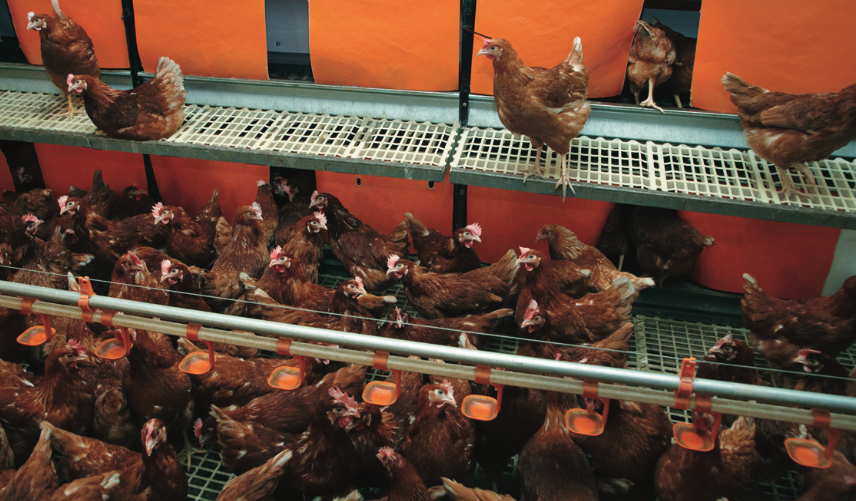
BLUSHIELD FOR CHICKENS
A farmer in Minnesota (USA) reported a hen house being affected by the Blushield device placed in the barn being used for cattle. It turns out the adjacent hen house was producing twice as many eggs as normal.
So a trial was conducted to test and prove the hypothesis. This was carried out at a poultry farm in Te Puna, situated on the outskirts of Tauranga, New Zealand.
The farm had two completely automated hen houses. House 1 was selected as the test house and House 2 as the control house. Each house had approximately 10,000–15,000 laying hens at any one time.
Five hens from each sector were taken and blood tests carried out on them, noting such things as parasites, blood cell count and platelet shape and size. Also, the general health of the chicken was noted as to feather loss, weight, skin rashes and any other features that were relevant.
The weight of the eggs laid each day was averaged out with samples taken from each sector. The same applied to quantity, shell thickness and yolk quality. Blood tests were carried out at one month and three- month intervals.
After One Month
Before installation, the mortality rate in both houses had been approximately 60–100 per month, and in the weeks immediately after installation the death rate in House 1 dropped to zero and rose to four and six respectively in the following two weeks. Egg production before installation was between 74–78 per cent of the total flock in House 1, and after one month the average rose to between 82–84 per cent. The yolk size had improved, and the yolk colour had changed to a deeper yellow.
After using Blushield, the mortality rate went from 60–100 deaths per month to less than 20 deaths per month.
After Four Months
Health of the chickens appeared to be at a constant level; parasites appeared to have been eradicated from the blood; cell count remained even, and platelet size and shape remained regular. Deaths dropped to between eight and 15 chickens per month in House 1.
Egg production rose to between 84–87 per cent of the total flock in House 1. A slight average increase in yolk size was noted, and the shell became stronger and less brittle.
After One Year
Even though there were several changes in the flock during the year regarding culling and new pullets being introduced, the blood samples taken showed no signs of parasites returning. The health of the hens remained at a good level with no skin diseases evident.
The noise levels were constantly lower at all times compared to the control house, and there was less pecking between hens. There was also a drop in the amount of food eaten by the chickens, yet the output in eggs and quality increased. The appetite in the control house, however, remained the same.
The mortality rate was the most significant factor of these tests. Before Blushield, there were 60–100 deaths per month. After Blushield, at no stage did this go over 25 per month and averaged out at about 16–18. The hens also appeared to have lost a lot of their aggressive nature and cannibalistic habits.
Egg production rose as high as 89 per cent at times but ended up averaging between 84–87 per cent which equates to a good 10 per cent increase in production for the farmer. The quality of the eggs remained at a high level throughout, with a consistent improvement in colour of the yolk and better viscosity in the egg whites. The average egg weight went from 63 grams to 66 grams. The shell did not improve greatly in thickness; however, crack testing gave an indication that the shells were stronger.
Longer-Term Effects
One of the longer-term effects the Blushield helps with is the term of the hens’ laying life, which was extended out by as much as 20 weeks per hen.
It is clear that Blushield has a significant effect on egg-laying chickens.
(Sources: GreenMedInfo.com, 28 June 2024 and Blushield.com)
